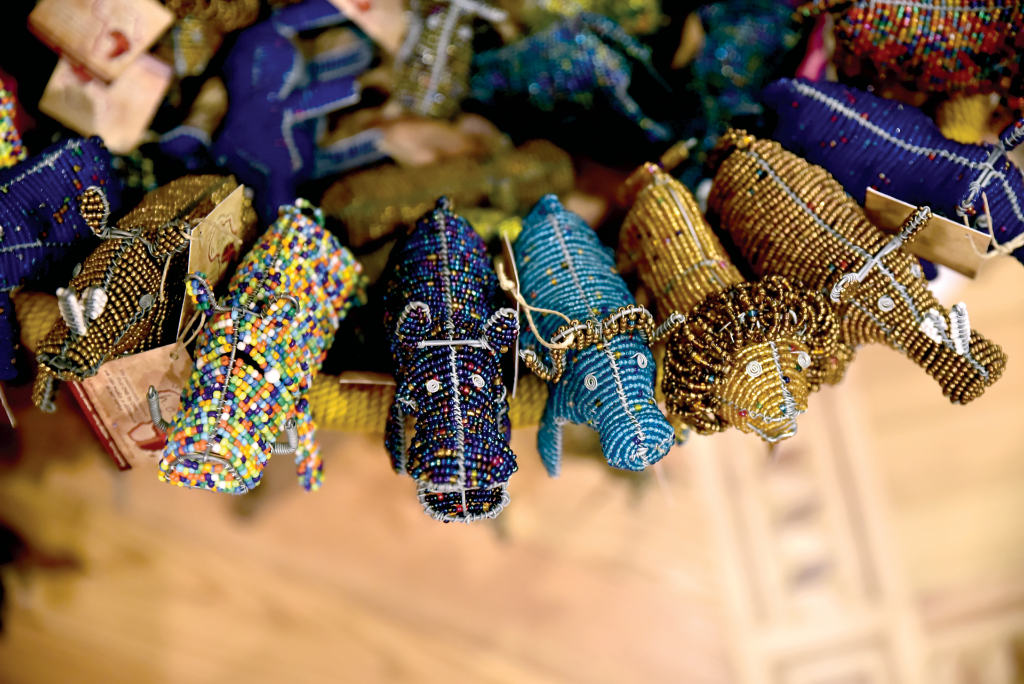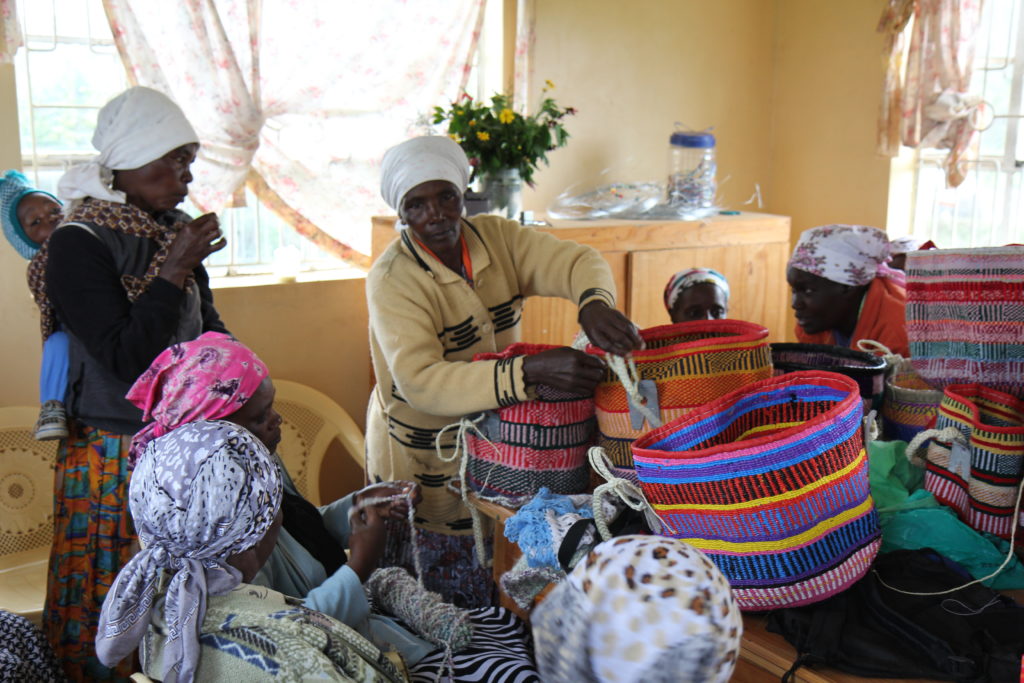She’s strong and vibrant. We want to be her friend.
Grass greens, teals, reds. Royal blues, purples, yellows. The walls of one room in Michelle Outman’s Cape Girardeau home look like Kenya, lined with colorful jewelry in all shades, made from recycled glass and paper beads, bones and ostrich egg shells.
The jewelry, scarves and other home goods are made by 30 women who are widows in the rural village of Kinangap, in central Kenya. These women are members of h.o.w? Ministry, of which Michelle is the executive director. The Ministry works to fight poverty by providing jobs for women and education for their children in Kinangap. To do this, h.o.w? Ministry sells the products of the women’s craftswomanship in Cape Girardeau.
The women, who range from twenty-somethings to women in their nineties, knit and crochet. Some of them sew, weave baskets and make jewelry. In addition to being artisans, they are subsistence farmers, each of them owning one-fourth of an acre to five acres of land. They sell produce and milk cows, selling milk to the local dairy depo. All of their children attend school.
h.o.w? Ministry recently dedicated their newly built Kinangap Women’s Empowerment Center in January 2018, where they held their fourth annual women’s conference. At it, the women learned to shear sheep, card and spin wool, and weave on a at loom.
Keziah Kariuki, Kenya coordinator of h.o.w? Ministry, is originally from Nairobi, and now lives in Kinangap. She is part of the Kikuyu tribe, one of Kenya’s 42 tribes and the tribe the h.o.w? Ministry women are from.
Here, Kariuki discusses why color is a central component of Kenyan culture and her own journey to serving full-time in ministry.
flourish: What inspires you?
Keziah Kariuki: In Africa, we have a lot of color around and sometimes the colors also reflect our feelings and our emotions, so bright colors would mean a happy moment. Dull colors would mean you’re either mourning, or it’s a sad event. So mostly when people are happy, especially when the women are happy doing something, mostly those are the colors they choose. The other inspirations that come is also the culture — different cultures have different colors. My [Kikuyu] culture, we like the color brown. We grew up in highland areas, and so most of our activities are ploughing our land — most of us, we prefer those colors because they don’t show dirt very often … It would also be boring for you to wear one color, so people prefer having a bit of flowers all over their dresses because even with that, it doesn’t show a lot of dirt.
f: How did you come to work at h.o.w? Ministry?
KK: My mom passed on when I was in high school — I had just graduated high school, and she died from HIV, and so after that I went to start living with my uncle who owns a children’s home. So, staying there and seeing the work he was doing, I was stepping in to help most of the time. I would leave everything and follow him and go and take care of this child and make sure the child was well when we came back. The other thing is, I got married. So I met my husband [David], and my husband is a former street boy who grew up in a children’s home. So look- ing around, I was like, ‘Okay, I think this is where I was supposed to be.’ And then at some point when I graduated, I had gone to try and work in a normal organization, and it wasn’t the same. I felt like I wasn’t impacting anyone with anything, and I just felt lonely. You know, sometimes you go to a job, and one morning I got a message and said, I think I’m in the wrong profession. I can use what I have learned, which is accountancy, to do the work of God. And I just want to be in ministry. There’s a kind of fulfillment where you don’t look at the finances, you don’t look at the challenges, sometimes you are just ready to go and be with these people and impact their lives.




